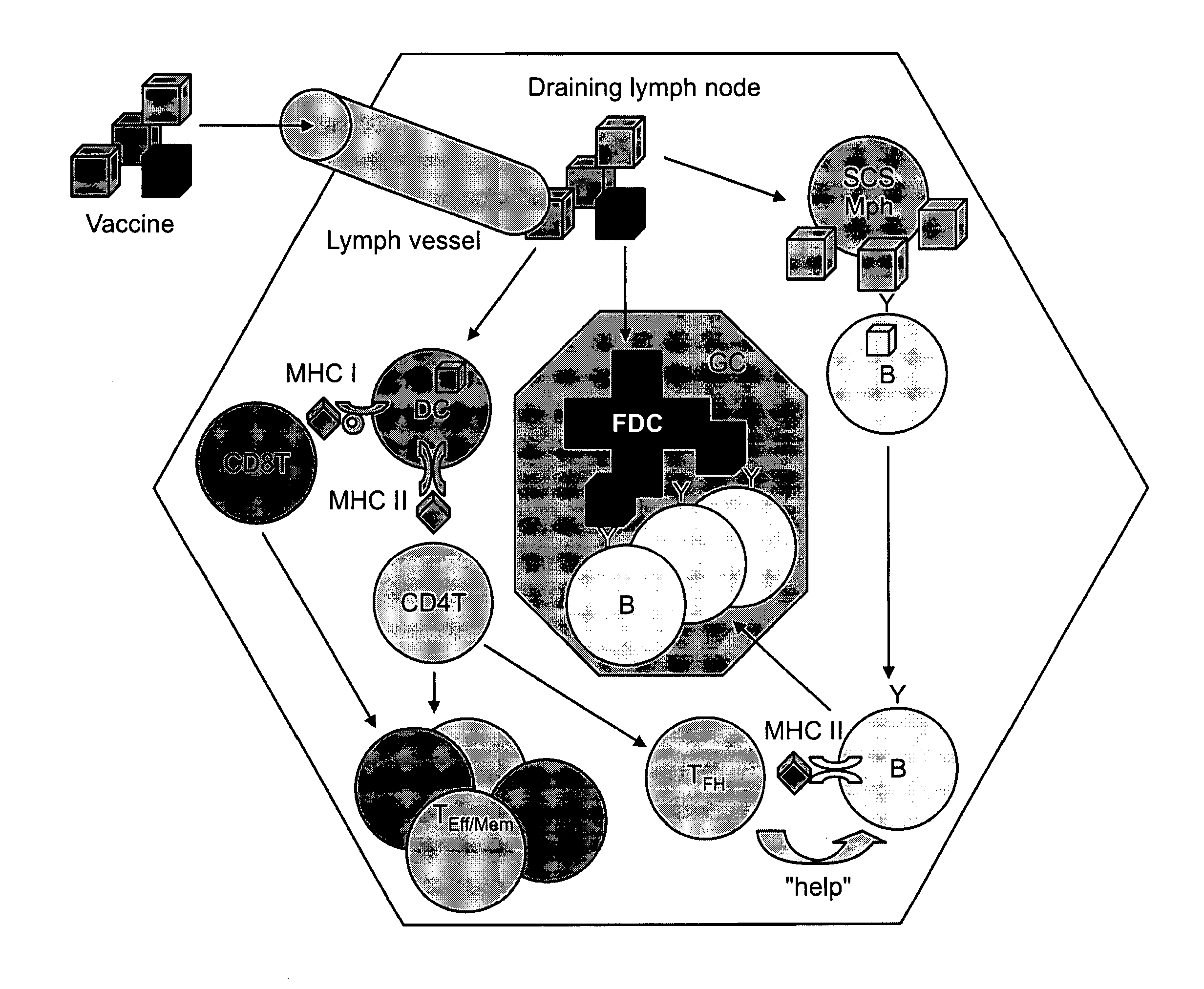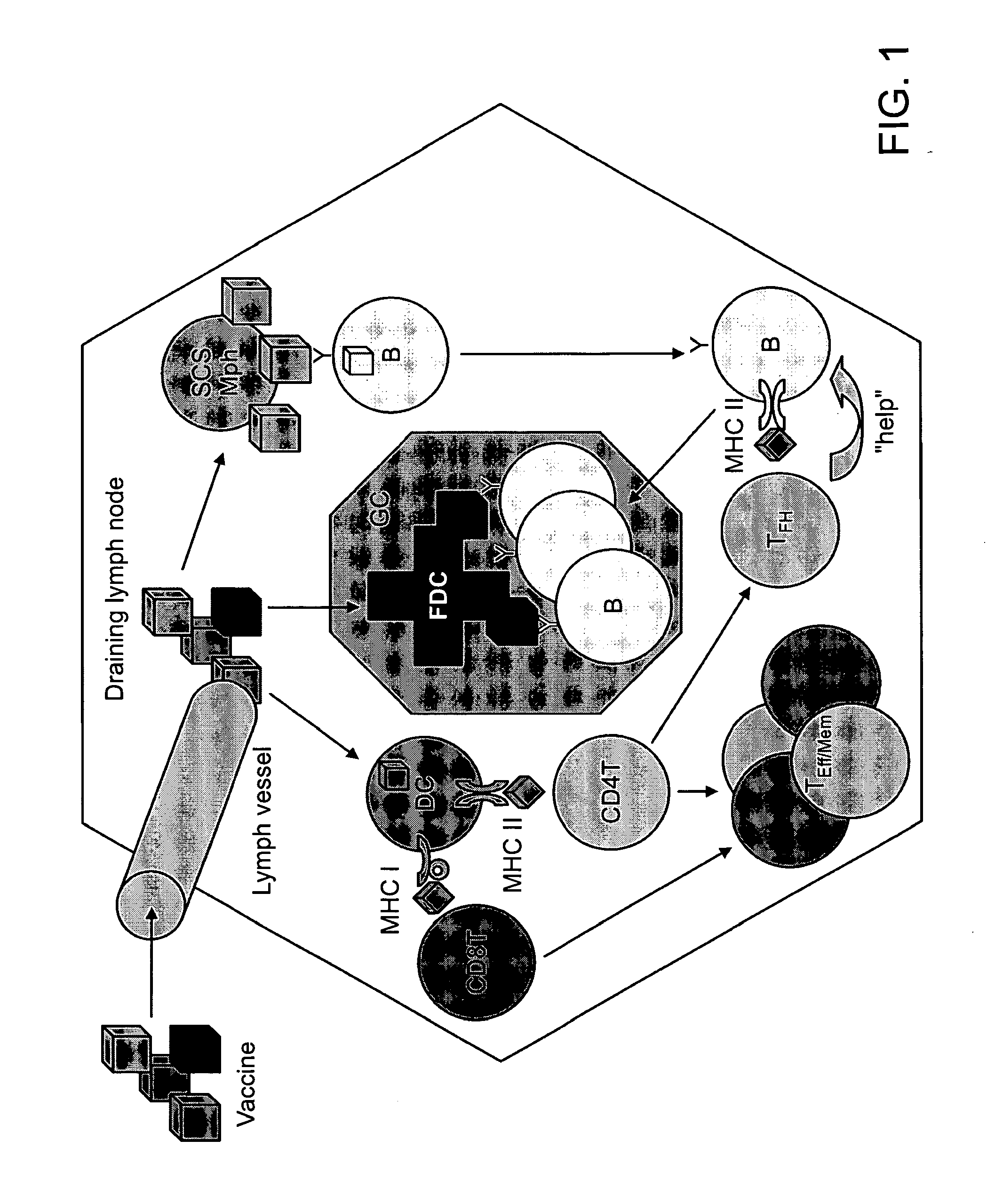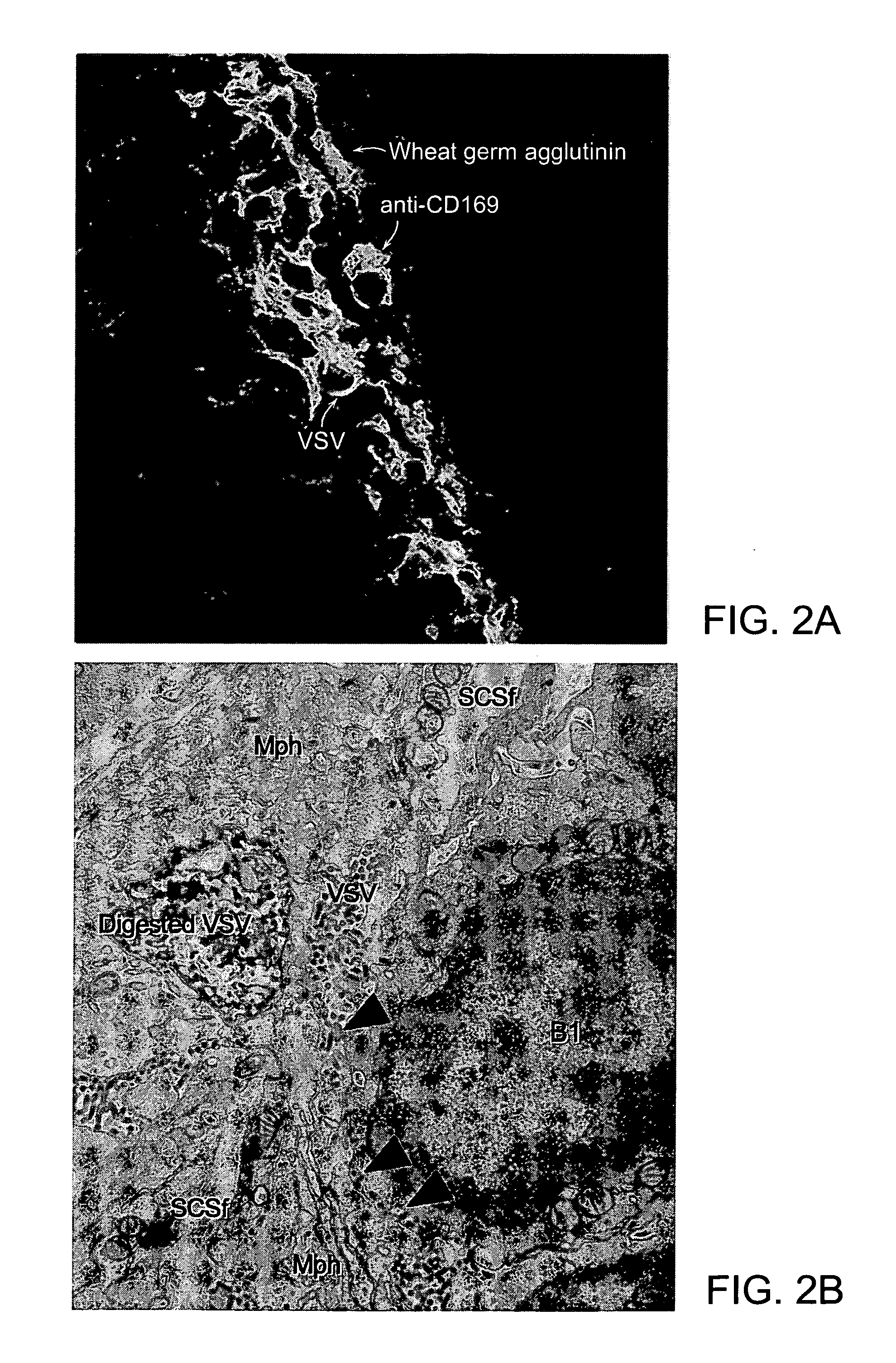Vaccine Nanotechnology
a nano-technology and vaccine technology, applied in the field of vaccine nanotechnology, can solve the problems of many vaccines in extremely short supply, lack of influenza, varicella, hepatitis a vaccine, etc., and achieve the effects of enhancing, suppressing, or redirecting an immune response, and modulating the immune system
- Summary
- Abstract
- Description
- Claims
- Application Information
AI Technical Summary
Benefits of technology
Problems solved by technology
Method used
Image
Examples
example 1
Subcapsular Sinus Macrophages in Lymph Nodes Clear Lymph-Borne Viruses and Present them to Antiviral B Cells
Materials and Methods
[0573]Method Summary
[0574]VSV-IND and VSV-NJ virions were purified from culture supernatants of infected BSRT7 cells and used either unmodified or fluorescently labeled with Alexa-568 (red) or Alexa-488 (green). Fluorescent viruses used for tissue imaging were UV-irradiated to prevent generation of non-fluorescent progeny. Fluorescent labeling or UV-irradiation of VSV-IND particles did not affect their antigenicity or their ability to elicit a calcium flux in VI10YEN cells (not shown). Following fluorescent virus injection into footpads, draining popliteal LNs were harvested for analysis by electron microscopy or to generate frozen sections for immunostaining and confocal microscopy. To image adoptively transferred B cells in LNs, VI10YEN and wildtype B cells were fluorescently labeled and co-transferred by i.v. injection into wildtype or mutant recipient ...
example 2
Exemplary Lipid-Based Vaccine Nanotechnology Architectures
[0612]Liposome Nanocarriers
[0613]In some embodiments, small liposomes (10 nm-1000 nm) are manufactured and employed to deliver, in some embodiments, one or multiple immunomodulatory agents to cells of the immune system (FIG. 3). In general, liposomes are artificially-constructed spherical lipid vesicles, whose controllable diameter from tens to thousands of nm signifies that individual liposomes comprise biocompatible compartments with volume from zeptoliters (10−21 L) to femtoliters (10−15 L) that can be used to encapsulate and store various cargoes such as proteins, enzymes, DNA and drug molecules. Liposomes may comprise a lipid bilayer which has an amphiphilic property: both interior and exterior surfaces of the bilayer are hydrophilic, and the bilayer lumen is hydrophobic. Lipophilic molecules can spontaneously embed themselves into liposome membrane and retain their hydrophilic domains outside, and hydrophilic molecules ...
example 3
In Vivo Targeting of SCS-Mph Using Fc Fragments from Human IgG
[0631]Fluorescent unmodified control nanoparticles (top panel, FIG. 24A) or Fc surface-conjugated targeted nanoparticles (middle and lower panel, FIG. 24A) were injected into footpads of anesthetized mice, and the draining popliteal lymph node was excised 1 hour later and single-cell suspensions were prepared for flow cytometry. Targeted nanoparticles were also injected into mice one week after lymph node macrophages had been depleted by injection of clodronate-laden liposomes (lower panel, FIG. 24A). The cell populations in gates were identified as nanoparticle-associated macrophages based on high expression of CD11b. These results indicate that (i) nanoparticle binding depends on the presence of clodronate-sensitive macrophages and (ii) targeted nanoparticles are bound to twice as many macrophages as control nanoparticles.
[0632]The Panels on the right of FIG. 24 show fluorescent micrographs of frozen lymph node sections...
PUM
| Property | Measurement | Unit |
|---|---|---|
| polymeric | aaaaa | aaaaa |
| metallic | aaaaa | aaaaa |
| amphiphilic | aaaaa | aaaaa |
Abstract
Description
Claims
Application Information
 Login to View More
Login to View More - R&D
- Intellectual Property
- Life Sciences
- Materials
- Tech Scout
- Unparalleled Data Quality
- Higher Quality Content
- 60% Fewer Hallucinations
Browse by: Latest US Patents, China's latest patents, Technical Efficacy Thesaurus, Application Domain, Technology Topic, Popular Technical Reports.
© 2025 PatSnap. All rights reserved.Legal|Privacy policy|Modern Slavery Act Transparency Statement|Sitemap|About US| Contact US: help@patsnap.com



